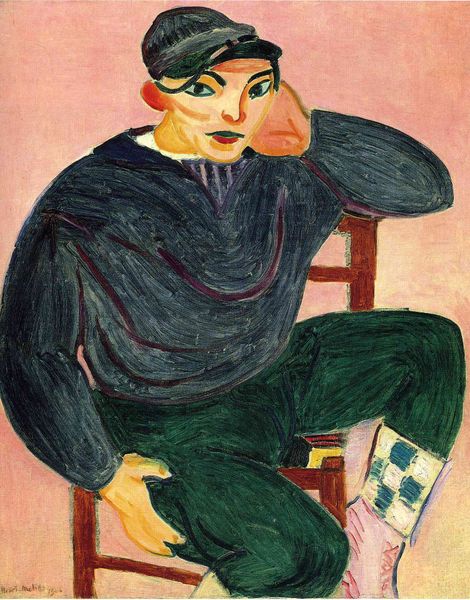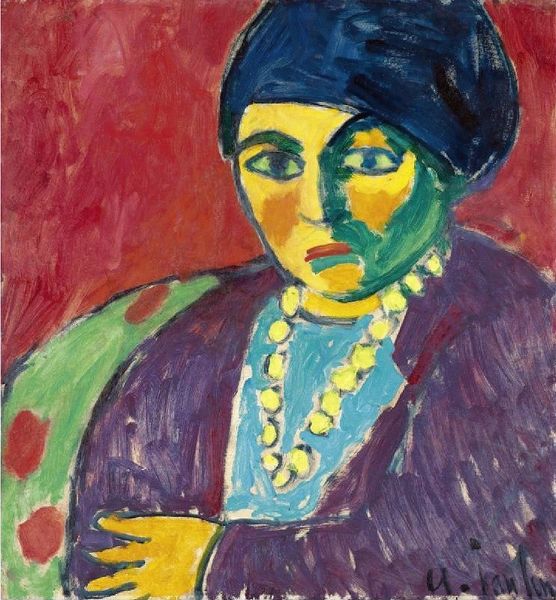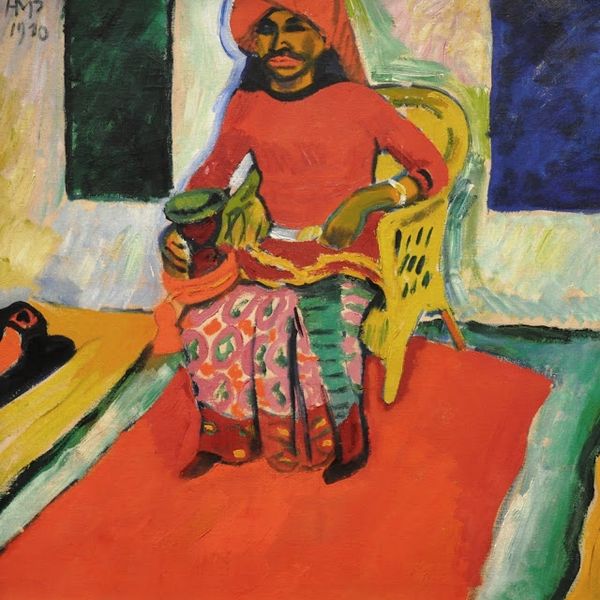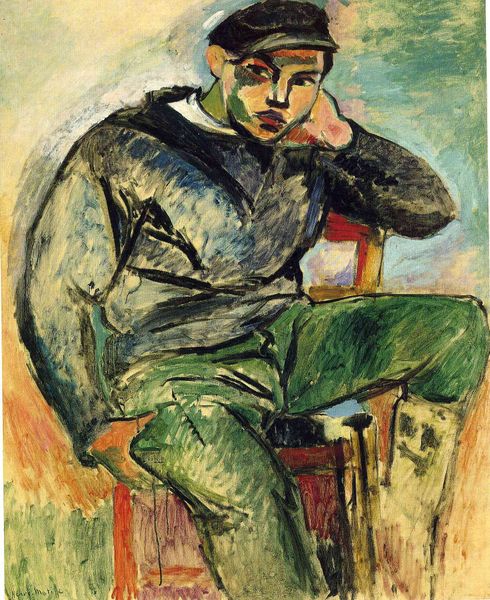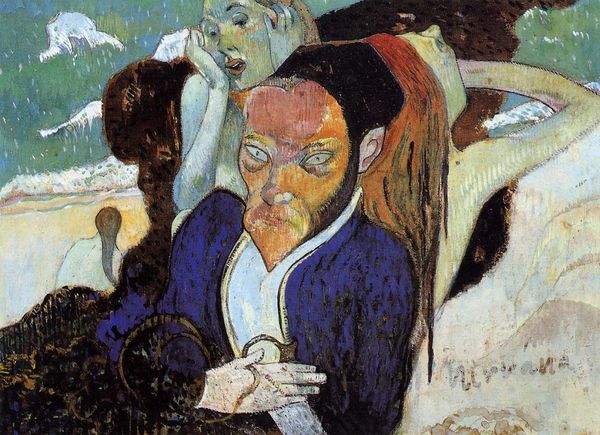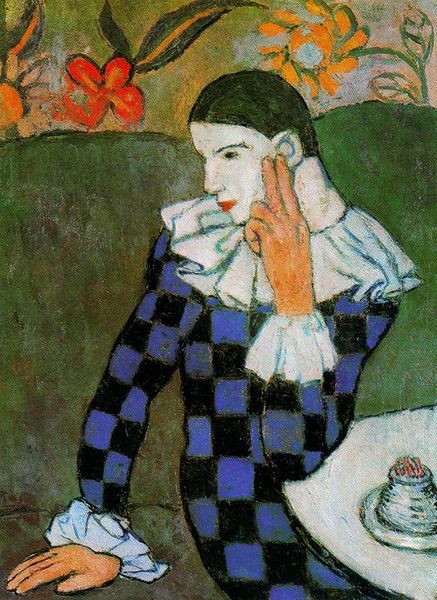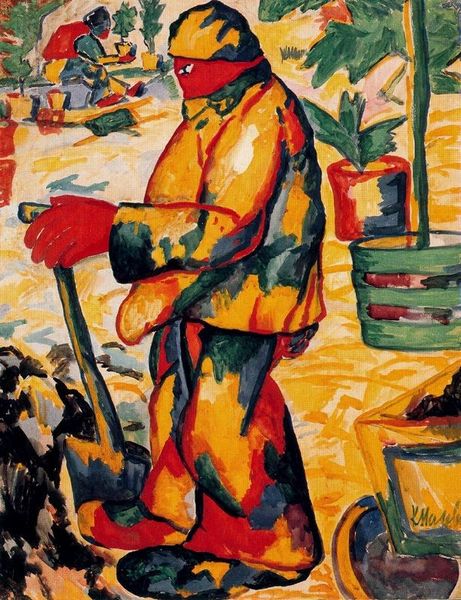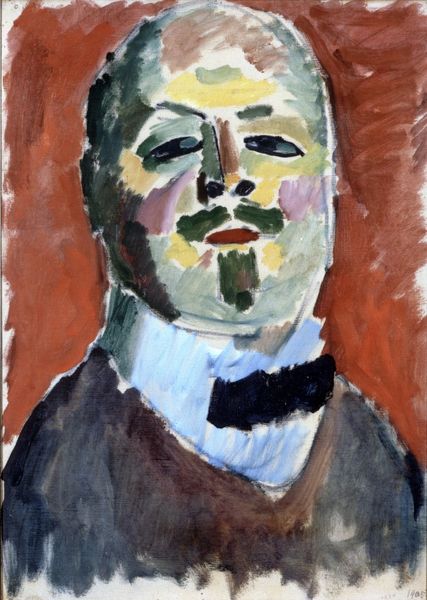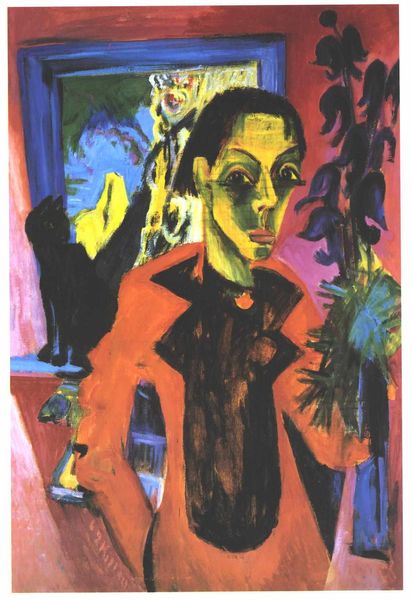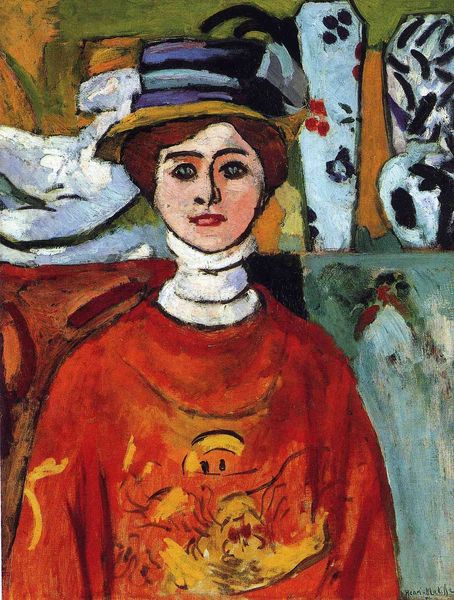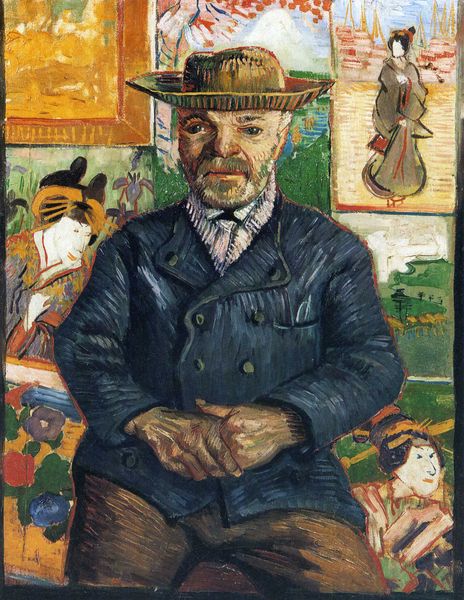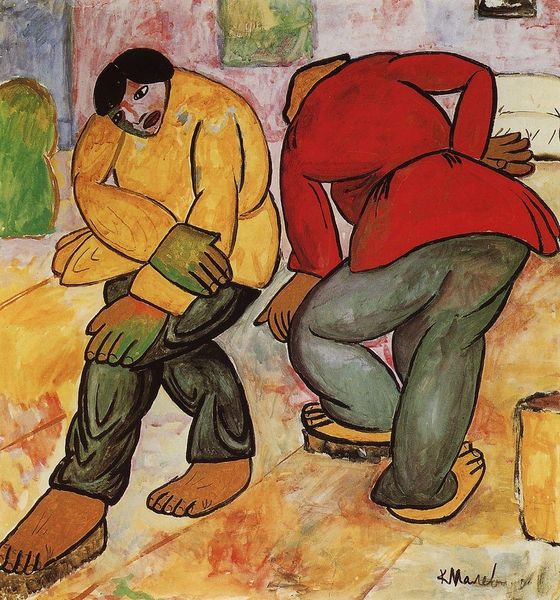
painting, oil-paint
#
portrait
#
fauvism
#
fauvism
#
painting
#
oil-paint
#
figuration
#
acrylic on canvas
Dimensions: 72 x 71 cm
Copyright: Public domain
Curator: Here we have Kazimir Malevich's "On the Boulevard." Notice how Malevich renders this figure using the vivid color palette and flattened forms that characterize Fauvism. Editor: It's unexpectedly somber, though, isn't it? Despite the high-keyed yellows and reds, the hunched posture and the stern look create a distinct sense of unease. Curator: The expressiveness derives precisely from those stark color choices. The acidic yellow of the figure's coat contrasts dramatically with the crimson hands, which directs our eyes right toward his tense posture. Malevich skillfully uses the color to emphasize emotional impact. Editor: Absolutely. I find it compelling how the setting—the titular boulevard—barely registers. It almost feels secondary. This is very interesting considering how cityscapes had taken center stage during the Fauvist movement across Europe at the turn of the century. It feels like a challenge to some impressionist principles and techniques of the time. Curator: One could read it that way. The minimal articulation of the trees and that suggestive but indistinct figure walking on the left directs our understanding to the materiality and treatment of color as well. The brushstrokes themselves become active elements. We are invited to consider them more directly as constitutive components. Editor: I wonder if the depicted scene echoes a deeper sentiment towards societal shifts happening in Russia during that period? Was Malevich intending to draw parallels between individual anxieties and larger socio-political concerns? Curator: That's certainly plausible. Considering Malevich's later embrace of pure abstraction with Suprematism, it’s fascinating to see the seeds of that reduction and simplification even in this early figurative work. It makes me think the background wasn't only an unaddressed aspect of the painting, but the starting point for the foreground and the subjects within. Editor: Indeed, there is a strong sense of visual deconstruction taking place. The psychological depth that Malevich explores hints toward what was on the horizon in the following decades. Curator: Analyzing the planes and compositional strategy here allows us to draw linkages between his exploration and artistic output from Western European movements in his time. Editor: Precisely, and by thinking about what it may mean for Malevich’s individual journey as a developing artist within a much larger context. A complex blend, all conveyed so effectively on the canvas.
Comments
No comments
Be the first to comment and join the conversation on the ultimate creative platform.
